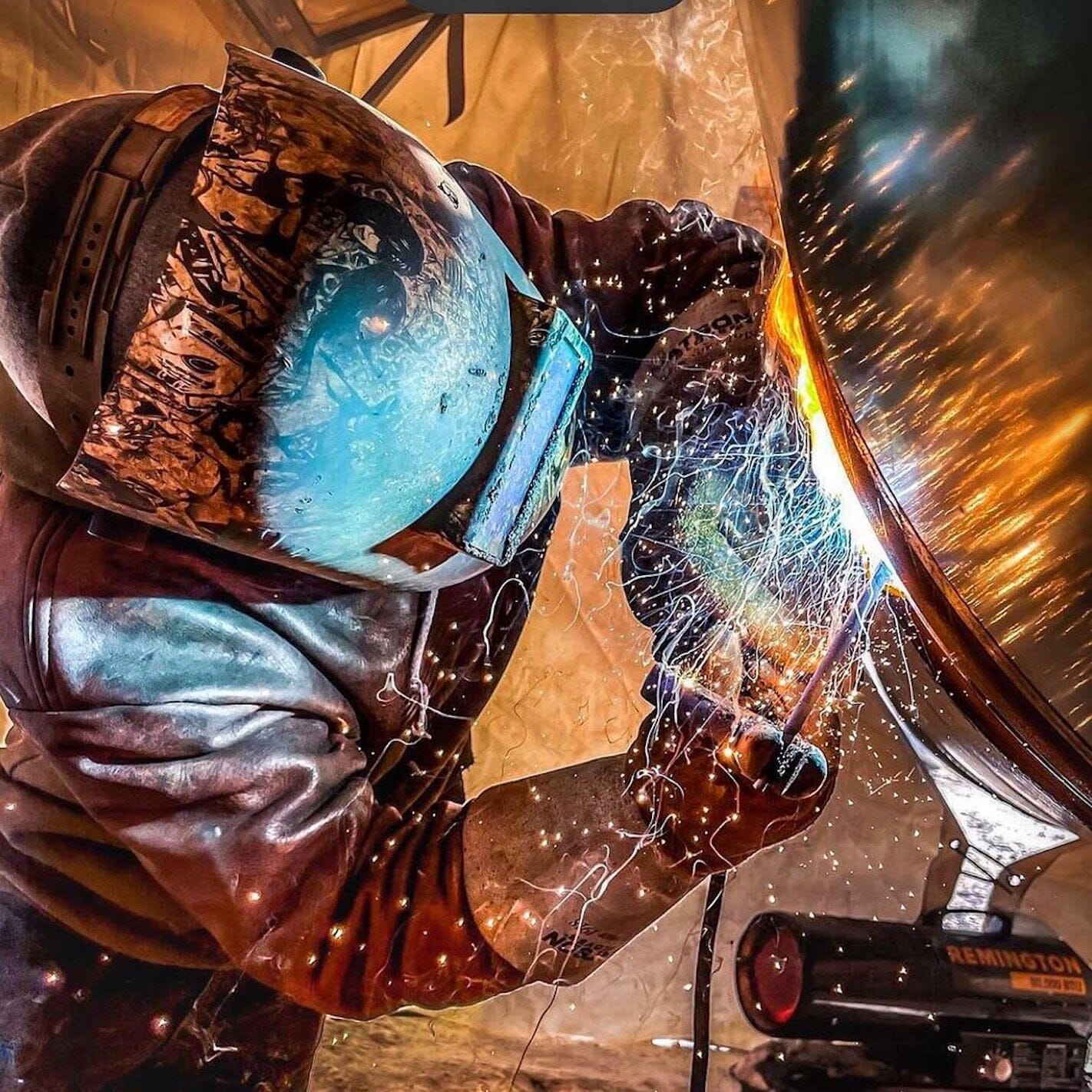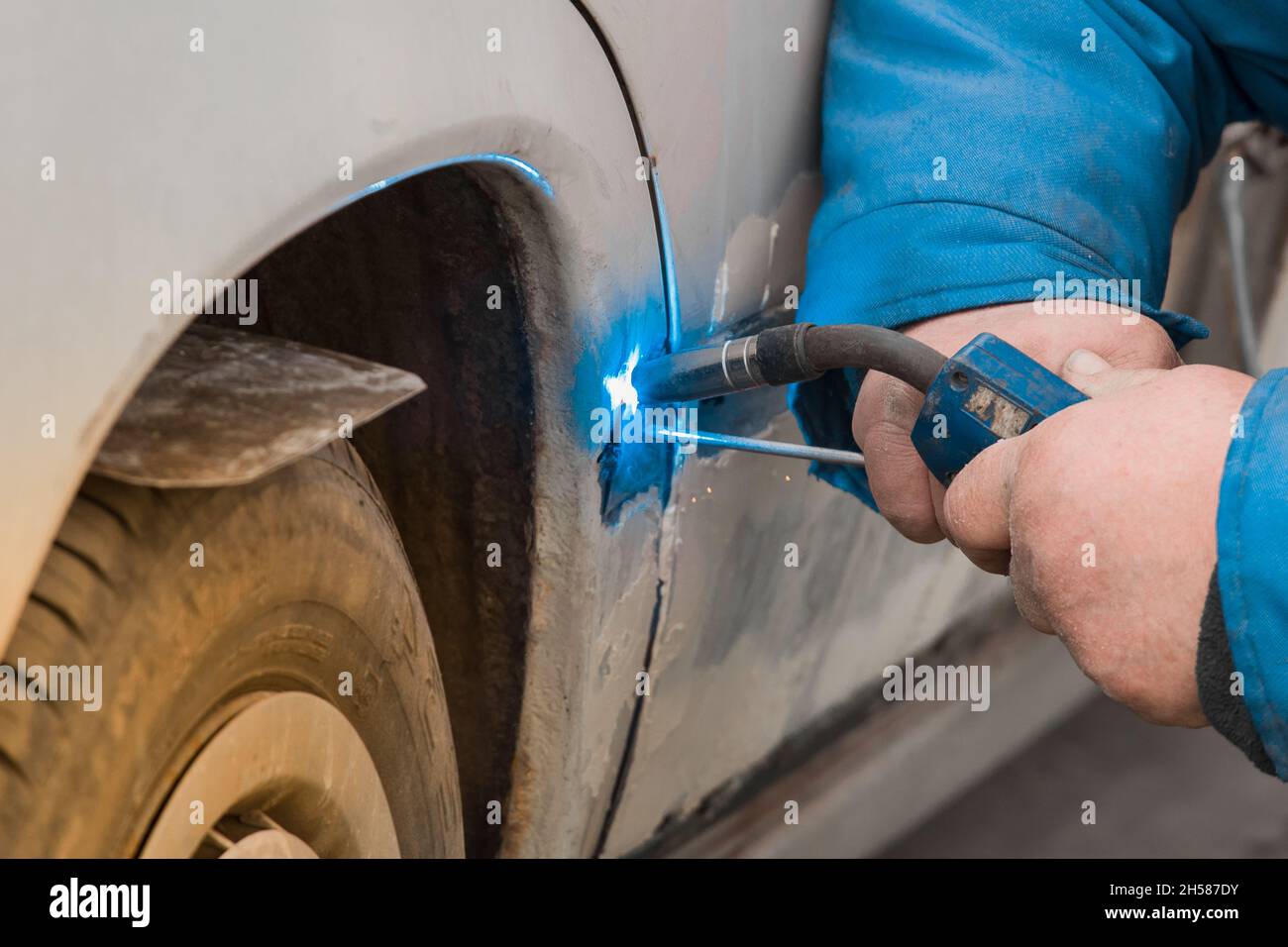Everything about Welding: Trick Insights Into Techniques and Ideal Practices for Success
Welding encompasses a variety of strategies, each suited for details products and applications. Understanding these techniques, such as GMAW, SMAW, and TIG, is essential for attaining ideal outcomes. The right tools and safety techniques can not be neglected. As preparation and troubleshooting play vital functions in the welding process, mastering these elements can substantially improve the top quality of the end product. What are the crucial factors that guarantee a successful weld?
Understanding Various Welding Methods
Welding methods include a selection of approaches, each fit to specific applications and materials. Among one of the most common methods are Gas Steel Arc Welding (GMAW), Protected Steel Arc Welding (SMAW), and Tungsten Inert Gas Welding (TIG) GMAW, additionally recognized as MIG welding, is prominent for its rate and versatility, making it optimal for slim materials. SMAW, or stick welding, is preferred for its simplicity and performance in exterior environments, specifically with thicker metals. TIG welding supplies precision and control, making it suitable for detailed job and non-ferrous steels (Montana Mobile Welding and Repair Belgrade Welding). Each method has its unique benefits and factors to consider, permitting welders to select the very best approach based on the project's demands, material type, and preferred outcomes. Comprehending these strategies is essential for successful welding
Crucial Welding Devices and Devices
While numerous welding strategies call for particular abilities, the best equipment and tools are just as crucial for achieving high quality results. Vital welding devices consists of welding machines, which differ depending on the technique-- such as MIG, TIG, or stick welding. Safety equipment, including aprons, gloves, and safety helmets, assurances security and comfort during the process. Additionally, components and clamps assist protect materials in position, making sure precision in welds. Consumables like welding poles, cord, and protecting gas are additionally important parts that influence the quality of the weld. Devices such as cutters and mills facilitate surface area preparation and post-weld completing, contributing to a specialist result. Investing in high-quality equipment eventually boosts the efficiency and performance of welding projects.
Safety And Security Practices in Welding
Appropriate safety and security practices are important in the welding sector to safeguard employees from possible threats. Welders should wear proper personal safety devices (PPE), consisting of headgears with appropriate shading, gloves, and flame-resistant clothes. Adequate air flow is essential to reduce exposure to damaging fumes and gases created during the welding process. In addition, workers should be learnt the proper handling of welding equipment to avoid mishaps. Fire safety measures, such as maintaining combustible materials far from the welding location and having fire extinguishers conveniently offered, are essential. Regular inspections of devices and work areas can help recognize potential hazards before they bring about accidents. By sticking to these safety techniques, welders can produce a safer working atmosphere and decrease dangers associated with their trade.
Readying Materials for Welding
Preparing materials for welding is an essential step that considerably influences the top quality and stability of the end product (Montana Mobile Welding and Repair Belgrade Fabrication). Proper prep work includes cleansing the surface areas to eliminate impurities such as corrosion, dust, and oil, which can jeopardize the weld. Strategies such as grinding, fining sand, or making use of solvents are typically used to accomplish a tidy surface. In addition, ensuring that the materials fit together snugly is crucial; spaces can bring about weak welds. It's additionally important to take right into account the placement and positioning of the parts, as this will certainly affect the ease of welding and the last outcome. Selecting the appropriate filler material and making sure compatibility with the base steels is vital for attaining strong, sturdy welds.
Tips for Achieving High-Quality Welds
Achieving top notch welds requires attention to information and adherence to finest practices throughout the welding process. Correct joint preparation is essential, making sure surfaces are clean and cost-free from contaminants. Picking the ideal filler material and welding strategy based upon the base steels is essential for ideal bonding. Keeping regular travel speed and angle while welding can prevent flaws and promote harmony. In addition, regulating heat input is necessary; too much warmth can lead to bending and deteriorated joints. If required, routinely checking the welds throughout the procedure permits for instant adjustments. Lastly, using suitable post-weld therapies, such as cleaning and stress relief, can improve the resilience and integrity of the weld, ultimately ensuring an effective result.
Troubleshooting Common Welding Issues
Welding often provides obstacles that can impact the top quality and honesty of the end product. Common concerns such as porosity, inconsistent weld grains, and getting too hot can emerge, each needing specific fixing strategies. Comprehending these problems is important for welders to boost their abilities and attain excellent outcomes.
Porosity Problems Explained
Although porosity can frequently be neglected, it remains a vital concern in welding that can compromise the integrity of a finished item. Porosity refers to the visibility of little gas pockets within the weld bead, which can damage the joint and lead to early failing. This trouble generally develops from impurities, dampness, or inappropriate protecting gas insurance coverage throughout the welding procedure. To mitigate porosity, welders get more info ought to validate that the base materials are tidy and completely dry, utilize proper securing gases, and maintain consistent welding specifications. Regularly checking the equipment and atmosphere can likewise help determine prospective issues prior to they show up in the weld. Dealing with porosity properly is necessary for achieving solid, durable welds that fulfill high quality criteria.

Inconsistent Weld Beads
Inconsistent weld grains can substantially impact the top quality and stamina of a completed product. Numerous aspects add to this problem, including improper travel rate, incorrect amperage settings, and inconsistent electrode angles. When the welder moves also rapidly, a grain may appear slim and do not have infiltration, while moving also gradually can create excessive accumulation. Additionally, using the incorrect amperage can cause either damaging or too much spatter, both of which compromise weld stability. The welder's technique, such as irregular lantern activity, can also lead to irregular grain appearance. To reduce these troubles, welders must focus on keeping consistent, regulated activities and making certain correct tools setups to accomplish harmony in their welds. Consistency is essential to accomplishing strong and dependable welds.
Overheating and Warping Issues
Excessive heat during the welding process can lead to significant overheating and deforming concerns, impacting the structural integrity of the work surface. These troubles commonly materialize as distortion, which can endanger placement and fit-up, making additional setting up testing. Aspects adding to overheating consist of the selection of welding parameters, such as voltage and travel speed, in addition to the sort of product being bonded. To minimize these concerns, welders should maintain regular traveling speed and ideal heat input while keeping an eye on the workpiece temperature. Furthermore, preheating or post-weld warmth therapy can help minimize tensions triggered by rapid air conditioning - Montana Mobile Welding and Repair Welding. Routine examination and adherence to finest practices are essential in stopping overheating and guaranteeing the long life and reliability of welded structures
Regularly Asked Inquiries
What Are the Occupation Opportunities in the Welding Sector?
The welding market provides diverse occupation possibilities, including settings as welders, engineers, assessors, and teachers. Specialists can function in production, building, aerospace, and vehicle fields, taking advantage of solid demand and competitive incomes in different roles.
Just How Can I Improve My Welding Speed Without Compromising High Quality?
To enhance welding rate without compromising high quality, one should exercise effective techniques, keep equipment, maximize setups, and enhance hand-eye coordination. Normal training and looking for feedback can likewise substantially add to achieving much faster, high-grade welds.
What Accreditations Are Readily Available for Welders?
Numerous certifications exist for welders, consisting of those from the American Welding Culture (AWS), the National Center for Building Education and Research Study (NCCER), and different industry-specific companies. These qualifications boost employability and show skill efficiency.
Just How Does Welding Influence the Features of Metals?
Welding affects the properties of steels by modifying their microstructure, which can result in modifications in ductility, toughness, and firmness. Warmth input and cooling rates during the procedure significantly influence these material characteristics.
Can I Bonded Dissimilar Metals With Each Other?
